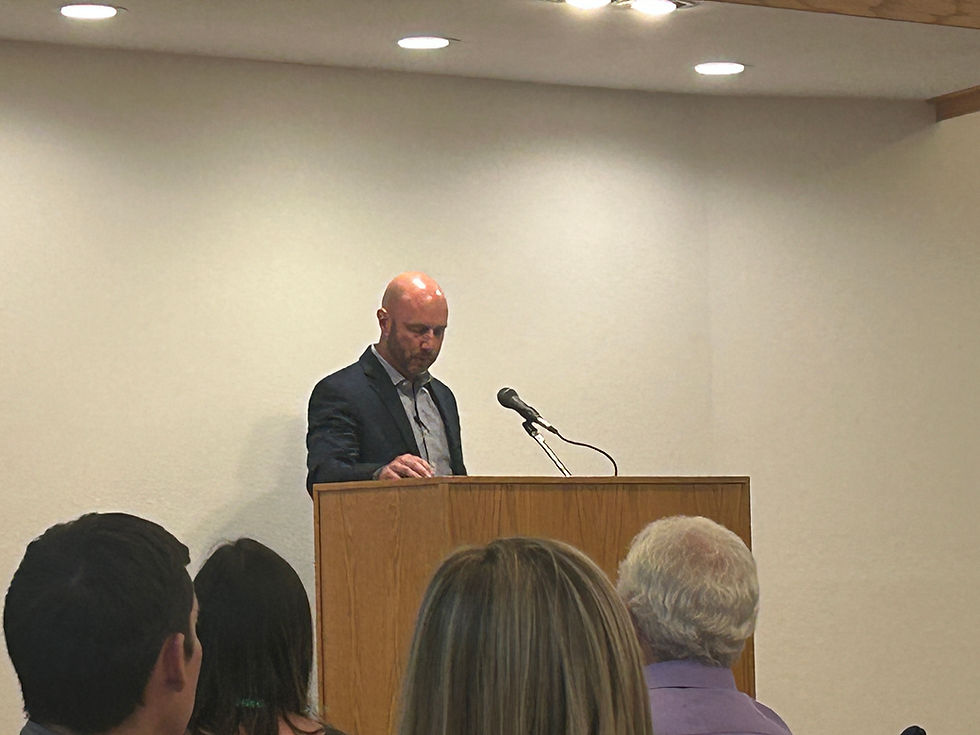Behind the Razor Wire: Marilyn Hefner’s Time Inside the Kit Carson Correctional Facility
- Kristina Hemel
- May 8
- 3 min read

Information taken from an interview on the Good Neighbor Hour-- What’s it like to spend four years inside a prison? If you ask Marilyn Hefner, she’ll smile and say, “Well, first of all, I was on the right side of the bars.”
Marilyn recently sat down with us to reflect on her time at the now-closed Kit Carson Correctional Center in Burlington, Colorado—a facility that could once house up to 1,400 inmates and employed over 200 people. While it’s easy to imagine prison life as something out of a movie, Marilyn’s experience paints a picture of hard work, surprising friendships, and a whole lot of early mornings.
From the Classroom to the Cellblock
Marilyn has been writing since her high school days—stories, columns, and even a booklet or two about her life as a “country girl.” But in 2010, a new chapter began when she traded her job at the college for a clerical position in the Human Resources department at the prison.
“I wasn’t one of the first to jump at the opportunity,” she admitted. “But a friend of mine told me about an opening, and I decided to take a chance. I had no idea I’d end up loving HR.”
Her role started with organizing employee records—nothing to do with the inmates—and eventually expanded into payroll, just in time for her supervisor to head out on early maternity leave.
“I was suddenly doing payroll for over 200 employees across multiple shifts. On payday mornings, I’d be there at 6 a.m. handing out slips face-to-face. That’s how I got to know every single person in the building.”

A City Like No Other
The prison wasn’t just cells and security. It was its own little city—with its own rules, rhythms, and surprises.
“There were so many misconceptions,” Marilyn said. “People think they know what goes on in a prison, but 99% of the time, we’re wrong. I was wrong.”
The Burlington facility was a medium-security private prison originally operated by Corrections Corporation of America (CCA), which later changed names—ultimately becoming CoreCivic before the company hit financial trouble. By the time the prison closed in 2016, it had expanded dramatically to meet growing demand, at one point housing inmates from Idaho and other states.
Though Marilyn never worked directly with inmates, she recalls how complex and carefully structured prison operations were. From education programs to transportation logistics and shifts that spanned the clock, it truly ran like a small city.
Still Standing Empty

Today, the facility sits empty—thousands of square feet of cells, classrooms, and administrative offices kept in working condition, just in case it's needed again.
“It’s a shame,” Marilyn said. “All that infrastructure, just sitting there. But reopening it isn’t something that can happen overnight. You’d have to hire a whole staff, find them housing, get systems running again.”
And though her prison days are behind her, Marilyn says the experience gave her not only a new career direction, but a deeper understanding of how much we don’t know about what goes on behind those locked gates.
Want to hear more from Marilyn?
She’s working on a series of short stories and reflections, including one called “A City Like No Other,” which chronicles her years inside the walls of the prison—not as an inmate, but as a woman finding purpose, humor, and connection in an unexpected place.
Stay tuned for more from Marilyn, and maybe—just maybe—we’ll bring in a few of her former colleagues to tell the rest of the story.















Comments